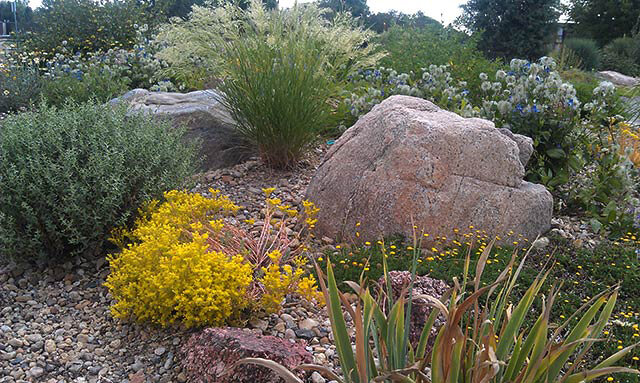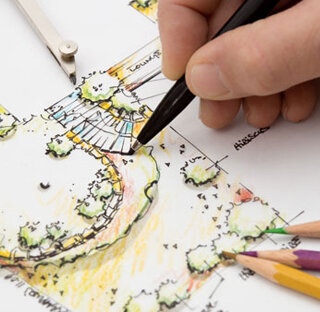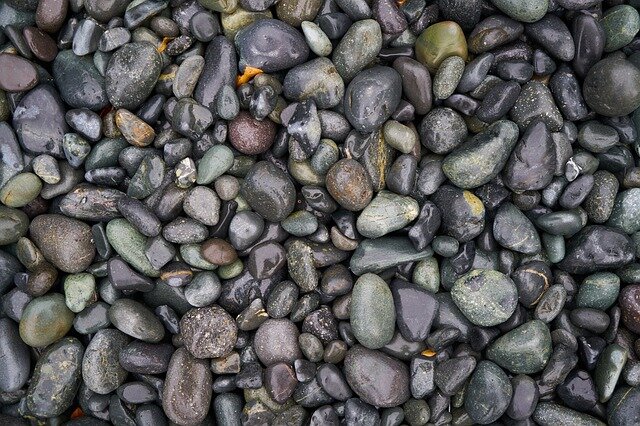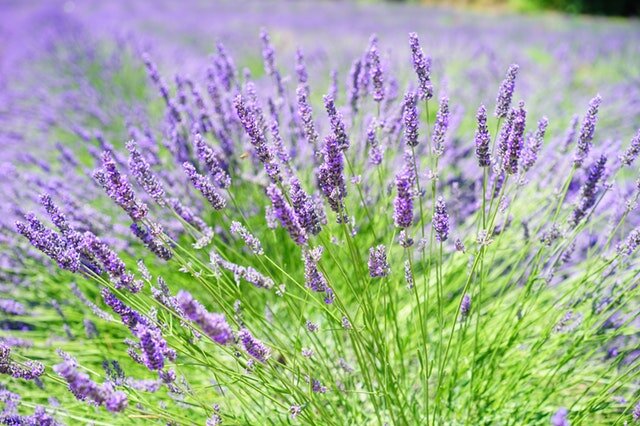Xeriscaping Your Front Yard
Xeriscaping is a landscaping method that utilizes water conservation techniques. It's great for homes in dry climates, for those who want to decrease the pollution they put into the world, or for people who want to revamp their yard's look. Are you thinking of xeriscaping your front yard? Well, there are many benefits of xeriscaping, such as:
 Emits less air pollution by eliminating the need for gas lawn mower usage.
Emits less air pollution by eliminating the need for gas lawn mower usage.- Promotes water conservation as well as saves you money by watering less.
- Creates a new and vibrant look to your yard, all while being environmentally friendly.
- Eliminates the need for using harsh chemical fertilizers and pesticides.
- It's also good for wildlife and insects which are critical assets to our environments health.
Xeriscaping is a beautiful way to transform your Reno landscaping into an environmentally friendly and low-maintenance oasis for plants to thrive in less than sustainable conditions. Xeriscaping does take a bit of planning. It's important to know which plants to use, where to place them, and how to properly care for them. Use these helpful tips to guide you in turning your front yard into a xeriscaped masterpiece.
Before you dive right in, devise a design.
It's important to know what you have to work with, so take notes of the area you plan to xeriscape. What kind of soil is already there? Which parts of your yard sees the most sun? Do you notice any water pooling in certain areas? Does it get windy around your yard? Once you know these things, you can start choosing plants and other decorations that will not only sustain the area, but will give your yard the look you've been dreaming of.
Use soil that keeps moisture in.
You may be turned off to using clay soil because it tends to be difficult to work with and is usually not the best environment for plants to thrive in. However, when the proper organic material is added, clay soil is the perfect soil to use when xeriscaping. Clay soil holds in moisture as opposed to sandy or grainy types of soil which dry out faster. You want to retain as much water as possible when xeriscaping so that you eliminate the need to irrigate.
Use gravel and stone in place of grass.
 For grass to look its best, it requires an abundance of water. Gravel and stone are good alternatives to grass because they are low-maintenance, eliminate the need for harsh chemical pesticides and fertilizers, and prevent water run-off by allowing rain water to soak into the ground. Gravel and stone are also aesthetically appealing because there are so many varieties of shapes, sizes, and colors that can add to the creativity of your yard.
For grass to look its best, it requires an abundance of water. Gravel and stone are good alternatives to grass because they are low-maintenance, eliminate the need for harsh chemical pesticides and fertilizers, and prevent water run-off by allowing rain water to soak into the ground. Gravel and stone are also aesthetically appealing because there are so many varieties of shapes, sizes, and colors that can add to the creativity of your yard.
Use mulch to cover garden beds.
Mulch is used as a covering to keep soil cool, suppress weeds from growing, and it retains water to keep soil moist. Organic mulch, once decomposed, also proves to be a great natural fertilizer. Because there are so many different kinds of mulch to use, such as straw, bark chips, and compost, you can really customize your yard to look how you want.
Use plants native to the area you live in.
It's always a good idea to use native plants that have already adapted to the environment they grow in. This makes them easier to care for because they require less water, saves you the time to plant them, and also saves you money from having to buy other plants. Native plants are able to evolve to their surrounding environment, meaning they are more sustainable than other plants may be.
Use succulents and other drought tolerant plants.
 Succulents are plants that thrive in arid climates because of the thick leaves they have. These are great plants to use when xeriscaping because of their durability and low-maintenance qualities. They require less water and prefer to be planted in relatively sunny spots so long as they don't get too much direct sunlight. Succulents also provide an aesthetic appeal because of the varying types and colors, all while making your yard look more unique. There are also a wide range of drought tolerant plants you can use to brighten and liven up your xeriscaped yard. Plants such as lavender, coneflowers, and marigolds are all drought tolerant and provide a lot of color.
Succulents are plants that thrive in arid climates because of the thick leaves they have. These are great plants to use when xeriscaping because of their durability and low-maintenance qualities. They require less water and prefer to be planted in relatively sunny spots so long as they don't get too much direct sunlight. Succulents also provide an aesthetic appeal because of the varying types and colors, all while making your yard look more unique. There are also a wide range of drought tolerant plants you can use to brighten and liven up your xeriscaped yard. Plants such as lavender, coneflowers, and marigolds are all drought tolerant and provide a lot of color.
Use run-off to water plants.
Run-off comes from rain, snowmelt, or other excess water sources that collect over land surfaces. Run-off is essentially a way for water to be recycled back into the environment, so it is a great technique to use when trying to conserve water. You can collect run-off from your roof in gutters that lead to a downspout which has a storage vessel at the bottom. This water can then be reused to water your newly xeriscaped yard.
Use shrubs and trees to block out wind.
Wind can be damaging to the more sensitive parts of your yard. To prevent damage from occurring, place taller trees and shrubs around your more delicate plants to protect them from heavy winds that may pull them from the ground, or from stray items that may have floated in from the air. For commercial and residential landscape design, call Antonucci at 775.841.5296. You can also visit our website and request a quote to get your Reno landscaping services started. Get a Free Quote
About the Author
As one of Northern Nevada’s leading landscape companies, Antonucci Lawn & Garden offers fresh ideas and quality craftsmanship to improve outdoor living. Since 2009, Antonucci has been focused on enhancing beautiful landscaping. Whether starting from scratch or renovating an existing backyard, our knowledgeable staff and certified team of contractors will explain everything you need to build your perfect outdoor retreat.
